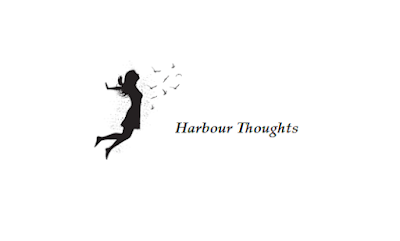The End of the Day
By Duncan Campbell Scott
I hear the bells at eventide
Peal slowly one by one,
Near and far off they break and glide,
Across the stream float faintly beautiful
The antiphonal bells of Hull;
The day is done, done, done,
The day is done.
The dew has gathered in the flowers,
Lake tears from some unconscious deep:
The swallows whirl around the towers,
The light runs out beyond the long cloud bars,
And leaves the single stars;
'Tis time for sleep, sleep, sleep,
'Tis time for sleep.
The hermit thrush begins again, —
Timorous eremite —
That song of risen tears and pain,
As if the one he loved was far away:
‘Alas! another day — ’
‘And now Good Night, Good Night,’
‘Good Night.’
Poem Analysis:
Duncan Campbell Scott’s The End of the Day is a serene and elegiac poem that beautifully captures the tranquil transition from day to night. Rich in sensory detail and imbued with quiet melancholy, the poem reflects on endings—not just of the day, but implicitly of life, love, or memory. Through the interplay of sound, light, and natural imagery, Scott creates a meditative space where reflection, loss, and rest intermingle.
Theme of Closure and Reflection
The poem opens with the ringing of evening bells:
I hear the bells at eventide / Peal slowly one by one...
These lines immediately establish a tone of solemn finality. The bells are both literal and symbolic—marking the end of the day, but also evoking a sense of ritual, passage, or even funeral tolls. The repetition of the word “done”:
The day is done, done, done, / The day is done.
—emphasizes completion and underscores the rhythm of finality. Scott draws the reader into a moment of stillness, where the clamor of day quiets and a contemplative mood takes hold.
Nature as a Mirror of Emotion
In the second stanza, Scott turns to nature to deepen the emotional tone:
The dew has gathered in the flowers, / Like tears from some unconscious deep...
Here, nature becomes a mirror for human feeling. The dew—gentle and unspoken—resembles tears that rise from unknown sorrow. The metaphor suggests that beneath the surface of daily life lies a deep well of emotion, possibly unacknowledged grief or longing.
The swallows whirl around the towers, / The light runs out beyond the long cloud bars...
These lines portray the world in motion and in retreat. The swallows signal the day's close with their erratic evening flights, and the light, personified, “runs out,” as if fleeing the world. The imagery suggests both beauty and evanescence. The night doesn’t merely fall—it gently takes over, softening the world into sleep.
'Tis time for sleep, sleep, sleep, / 'Tis time for sleep.
The repetition here is soothing and incantatory, like a lullaby. It affirms not only the need for physical rest but also hints at the broader metaphor of death as an eternal sleep.
The Hermit Thrush and Melancholic Song
The final stanza introduces a poignant note of loneliness through the song of the hermit thrush:
The hermit thrush begins again — / Timorous eremite —
The bird is described as a “timorous eremite,” or a shy hermit, reinforcing its symbolic association with solitude and spiritual reflection. The hermit thrush is known for its hauntingly beautiful song, and Scott uses it to personify unspoken sorrow or yearning:
That song of risen tears and pain, / As if the one he loved was far away...
This simile transforms the bird’s song into a lament. It expresses loss—not dramatic, but quietly heartbreaking. The idea that the one the thrush “loved” is far away adds an emotional resonance to the otherwise natural setting. Whether literal or symbolic, this distance reflects the universal ache of separation and memory.
The final lines complete the descent into night:
‘Alas! another day —’ / ‘And now Good Night, Good Night,’ / ‘Good Night.’
The repetition of “Good Night” echoes both the language of parting and the ritual of bedtime. It closes the poem in a whisper, a hushed benediction to the day, life, and all that has passed. It can be interpreted as a farewell to the day’s labors, or metaphorically, as a goodbye to life itself.
Major Themes
- Transience and Finality: The repeated words “done” and “sleep” underline the central theme of endings, reminding us of the impermanence of all things—day, joy, presence.
- Melancholy and Beauty: The poem balances sorrow with serenity, allowing readers to feel the sadness of departure alongside the peace it brings.
- Nature and Emotion: Scott uses the natural world not just as setting, but as emotional landscape. Bells, swallows, dew, stars, and birds each symbolize inner states—grief, peace, memory, and farewell.
- Solitude and Spiritual Quietude: The image of the hermit thrush conveys a quiet spirituality. The “timorous eremite” reflects the inward turn of thought as day ends—an acceptance of solitude and perhaps of fate.
Style and Form
The poem’s rhythm is gentle and musical, reinforced by repetition and enjambment. The soft echoes of words like “done,” “sleep,” and “Good Night” create a hypnotic effect, pulling the reader inward. There is no harshness here—Scott’s language is tender, even when addressing loss. The tone is elegiac without despair, accepting without apathy.
The End of the Day is a masterfully understated poem that captures the delicate threshold between activity and rest, presence and absence, life and its twilight. Duncan Campbell Scott draws on the natural world to reflect the emotional truths of closure, creating a lullaby for the soul that is both restful and resonant. Through gentle rhythm, reflective imagery, and subdued emotion, the poem invites us to contemplate the grace in endings—and the quiet beauty that night can bring.
